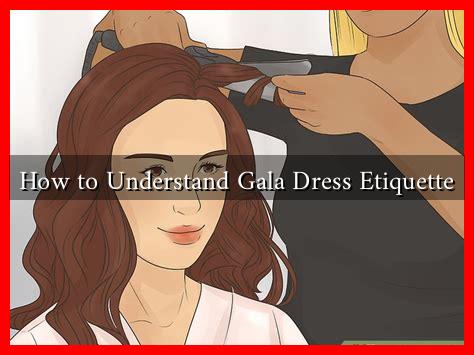-
Table of Contents
How to Understand Gala Dress Etiquette
Gala events are often synonymous with elegance, sophistication, and a touch of glamour. Whether it’s a charity ball, a formal wedding, or a corporate gala, understanding the nuances of dress etiquette is crucial for making a lasting impression. This article will guide you through the essential aspects of gala dress etiquette, ensuring you are well-prepared for your next formal occasion.
The Importance of Dress Etiquette
Dress etiquette is not merely about following rules; it reflects respect for the event, the hosts, and fellow attendees. Wearing appropriate attire can enhance your confidence and help you navigate social interactions more smoothly. Here are some reasons why understanding gala dress etiquette is important:
- First Impressions Matter: Your outfit is often the first thing people notice about you.
- Respect for the Hosts: Adhering to dress codes shows appreciation for the effort put into organizing the event.
- Social Cohesion: Dressing appropriately helps maintain a sense of unity among attendees.
Understanding Dress Codes
Gala invitations typically specify a dress code, which can range from “black tie” to “cocktail.” Here’s a breakdown of common dress codes you might encounter:
- Black Tie: This is the most formal dress code. Men should wear a tuxedo, while women typically opt for a floor-length evening gown.
- Formal or White Tie: The most formal of all, requiring men to wear a tailcoat and women to wear a full-length gown with gloves.
- Cocktail: A step down from formal, men can wear a dark suit, while women can choose a cocktail dress that falls above the knee.
- Business Formal: This is common for corporate galas. Men should wear a suit and tie, while women can wear a tailored dress or suit.
Choosing the Right Outfit
Once you understand the dress code, the next step is selecting the right outfit. Here are some tips to help you make the best choice:
- Consider the Venue: The location can influence your outfit choice. A gala held in a grand ballroom may call for more formal attire than one in a garden.
- Season and Time of Day: Evening events typically require more formal attire, while daytime galas may allow for lighter fabrics and colors.
- Personal Style: While adhering to the dress code, incorporate elements of your personal style to feel comfortable and confident.
Accessorizing for Impact
Accessories can elevate your gala outfit. Here are some key accessories to consider:
- Jewelry: Opt for statement pieces that complement your outfit without overwhelming it.
- Footwear: Choose elegant shoes that are comfortable enough for dancing and mingling.
- Clutch or Evening Bag: A small, stylish bag is ideal for carrying essentials without detracting from your outfit.
Case Studies: Gala Dress Success Stories
Many celebrities and public figures have mastered gala dress etiquette, setting trends and standards for others. For instance, at the Met Gala, attendees often push the boundaries of fashion while still adhering to the event’s theme. Celebrities like Rihanna and Blake Lively have been praised for their stunning outfits that perfectly balance creativity and elegance.
According to a survey by The Knot, 75% of guests feel more comfortable when they adhere to the dress code, highlighting the importance of understanding gala dress etiquette.
Conclusion
Understanding gala dress etiquette is essential for making a positive impression at formal events. By familiarizing yourself with dress codes, choosing the right outfit, and accessorizing thoughtfully, you can navigate any gala with confidence and style. Remember, the key is to respect the occasion and express your personal style within the guidelines provided. For more insights on formal attire, you can visit The Knot.
In summary, gala dress etiquette is not just about looking good; it’s about honoring the event and its hosts while feeling comfortable in your own skin. With these tips in mind, you’ll be well-equipped to shine at your next gala.


